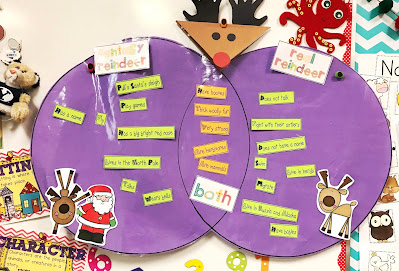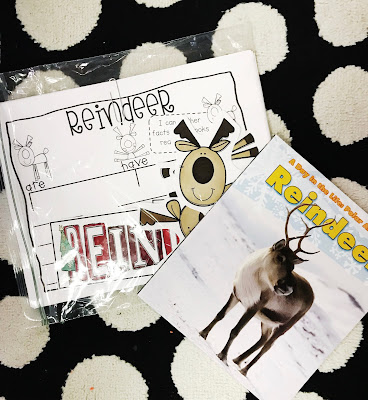Teaching kindergarten in December is just so fun! I love bringing the magic of the season into the classroom. One of my favorite themes to teach is reindeer. I pull out all my reindeer books (fiction and non fiction). After reading the books at the end of the week we make a Venn diagram about fantasy reindeer and real reindeer.
Another fun thing to do with all the books you read is to make a reindeer tree map. Then have students use their tree map to help them write all about reindeer. Attach their writing to a cute reindeer craft.
You could also make a reindeer diagram. We used shared writing to label the parts of the reindeer. Then the kiddos made their own reindeer diagram in their science notebook.
And we can't forget the crafts! Here are a few that we made. I make these handprint reindeer every year and send home as parent gifts. Glue their yearbook photo on the back and have the students write their name and year on the back with a sharpie marker.
If you need a Christmas present idea to give to your students I love to give reindeer noses! Each baggie is filled with whoopers and one chewy cheery sour. And if you can't find chewy cheery sours just use whoopers like I did this year.I hope you liked these ideas! You can check my other reindeer posts for more ideas. Happy teaching.
Click here to download my reindeer unit with much more to help you out this holiday season.
























































